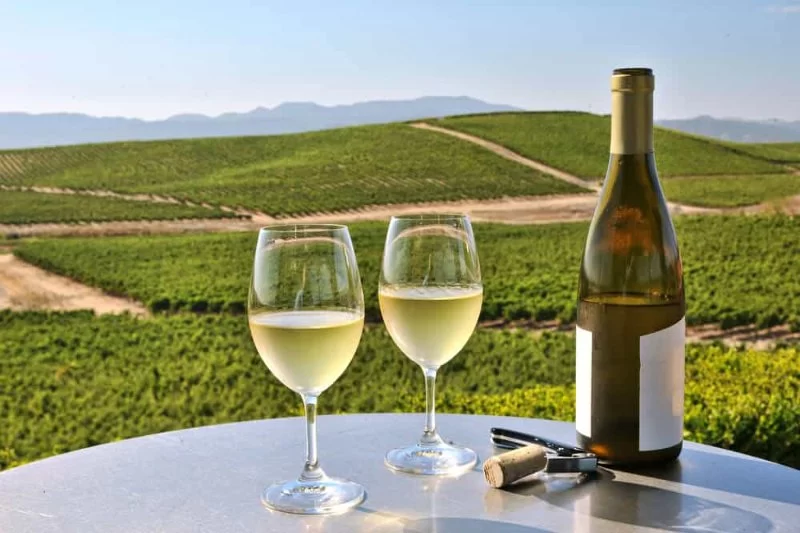
- Napa-Versus-Sonoma-Overview - An Introduction to Napa and Sonoma
- Key-Differences-Napa-Sonoma - What Sets Napa and Sonoma Apart
- Best-Wineries-Napa-Sonoma - Top Wineries to Visit in Napa and Sonoma
- Wine-Tasting-Experiences - Unique Wine Tasting Experiences in Both Regions
- The-Future-of-Napa-and-Sonoma-Wineries - The Future of Wine Regions in California
1. Napa vs Sonoma: An Overview of California’s Premier Wine Regions
California is known worldwide for its wine production, and two of its most famous wine regions are Napa Valley and Sonoma County. Both areas boast stunning landscapes, a rich history in winemaking, and an abundance of wineries offering world-class experiences. While both regions produce exceptional wines, each offers a distinct atmosphere, culture, and wine-tasting experience. Whether you’re a seasoned wine connoisseur or a casual enthusiast, understanding the differences between Napa and Sonoma can help you choose the right destination for your next wine adventure.
Napa Valley, often regarded as California’s wine capital, is famed for its luxurious wineries, upscale resorts, and a focus on high-end wines, while Sonoma County is more laid-back, offering a variety of unique wine experiences in a less commercialized environment. In this guide, we’ll compare Napa and Sonoma to help you decide which region is best suited to your wine-tasting preferences.
2. Key Differences: Napa vs Sonoma
Although Napa and Sonoma are both located in Northern California and share similar climates conducive to grape growing, there are several key differences that set them apart.
- Vibe: Napa is known for its upscale, luxurious vibe. It’s home to world-renowned wineries like Opus One and Robert Mondavi, which cater to those seeking an elite experience. On the other hand, Sonoma offers a more relaxed, rustic atmosphere with boutique wineries and small farms. Sonoma’s wine culture feels more personal, with a focus on small production wines.
- Wine Style: Napa is known for its bold, full-bodied wines, especially Cabernet Sauvignon. The warm climate and dry conditions contribute to the intensity of the wines produced here. Sonoma, while also producing Cabernet Sauvignon, is better known for its Pinot Noir, Chardonnay, and Zinfandel varieties. The cooler climate in Sonoma County, particularly along the coast, influences the lighter, more nuanced wines.
- Size and Accessibility: Napa Valley is smaller than Sonoma County, which makes it easier to navigate. However, Napa can feel more crowded, especially during peak tourist seasons. Sonoma County, being larger, offers more variety in terms of wine experiences, with less congestion and more hidden gems to explore.
3. Best Wineries to Visit in Napa and Sonoma
When visiting Napa and Sonoma, you'll find a wide range of wineries offering tours, tastings, and experiences. Below are some of the top wineries in both regions that you shouldn't miss:
- Napa Valley:
- Opus One: A prestigious winery known for its Bordeaux-style blends.
- Robert Mondavi Winery: Famous for its Cabernet Sauvignon and Chardonnay, offering in-depth tours and tastings.
- Castello di Amorosa: A stunning medieval-style castle offering tours through its cellars and wine tastings.
- Sonoma County:
- Russian River Vineyards: Known for its exceptional Pinot Noir and a charming, intimate tasting room.
- Chalk Hill Estate Vineyards & Winery: Offers breathtaking views and world-class wines, particularly its Chardonnay.
- Gary Farrell Vineyards & Winery: A boutique winery focusing on Pinot Noir and Chardonnay, providing personalized tasting experiences.
4. Wine-Tasting Experiences in Napa and Sonoma
One of the key elements that set Napa and Sonoma apart is the type of wine-tasting experience you’ll encounter.
Napa Valley offers a more formal and curated wine-tasting experience, often including guided tours through picturesque vineyards, tastings with sommeliers, and luxurious food pairings. Many of the larger wineries have expansive estates, complete with upscale restaurants and lavish tasting rooms.
In contrast, Sonoma tends to offer a more personal and unpretentious experience. Many wineries in Sonoma allow you to meet the winemakers themselves and get a hands-on approach to the winemaking process. Visitors can tour smaller, family-run vineyards and enjoy a more casual, intimate experience.
Both regions offer a wide variety of experiences that cater to different tastes, whether you're looking for a lavish day out in Napa or a laid-back, personal experience in Sonoma. Regardless of the region, wine-tasting in either Napa or Sonoma is an unforgettable experience.
5. The Future of Napa and Sonoma Wineries
As the wine industry continues to evolve, both Napa and Sonoma face new challenges and opportunities. Climate change, sustainability, and evolving consumer preferences will continue to shape the future of these iconic wine regions.
Both Napa and Sonoma are embracing sustainability, with many wineries focusing on organic and biodynamic farming practices. In Napa, the trend towards high-tech winemaking and luxury tourism is likely to continue, while Sonoma may see a rise in boutique wineries focusing on artisanal, small-batch wines.
Regardless of what the future holds, Napa and Sonoma will undoubtedly remain at the forefront of the wine industry, offering exceptional wine-tasting experiences for years to come. For more information and to plan your wine country adventure, check out Refined Travel for recommendations on the best accommodations and activities in both Napa and Sonoma.







 Fair Point Marina4.0 (119 reviews)
Fair Point Marina4.0 (119 reviews) Barn Yard Camping4.0 (9 reviews)
Barn Yard Camping4.0 (9 reviews) Hazzard RV Park4.0 (7 reviews)
Hazzard RV Park4.0 (7 reviews) Brookside Meadows3.0 (38 reviews)
Brookside Meadows3.0 (38 reviews) Montgomery Hillside RV Park4.0 (24 reviews)
Montgomery Hillside RV Park4.0 (24 reviews) Farmington Hills Mobile Manor2.0 (110 reviews)
Farmington Hills Mobile Manor2.0 (110 reviews) Exclusive Travel Packages for First-Class Travelers: A Guide to Luxury Vacations
Exclusive Travel Packages for First-Class Travelers: A Guide to Luxury Vacations Refined Travel Experiences in Southeast Asia: Explore Luxury & Unique Destinations
Refined Travel Experiences in Southeast Asia: Explore Luxury & Unique Destinations How to Make the Most of Luxury Vacation Deals: Expert Tips for Savvy Travelers
How to Make the Most of Luxury Vacation Deals: Expert Tips for Savvy Travelers How to Enjoy a Refined Travel Experience in the Mountains
How to Enjoy a Refined Travel Experience in the Mountains Refined Travel Itineraries for Art and Culture Lovers: Explore the World of Art and History
Refined Travel Itineraries for Art and Culture Lovers: Explore the World of Art and History Most Luxurious Destinations for Honeymooners: Top Spots for Romance and Luxury
Most Luxurious Destinations for Honeymooners: Top Spots for Romance and Luxury